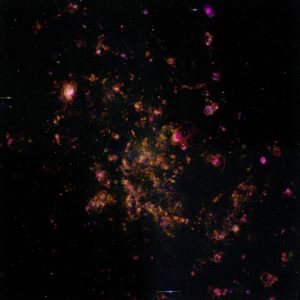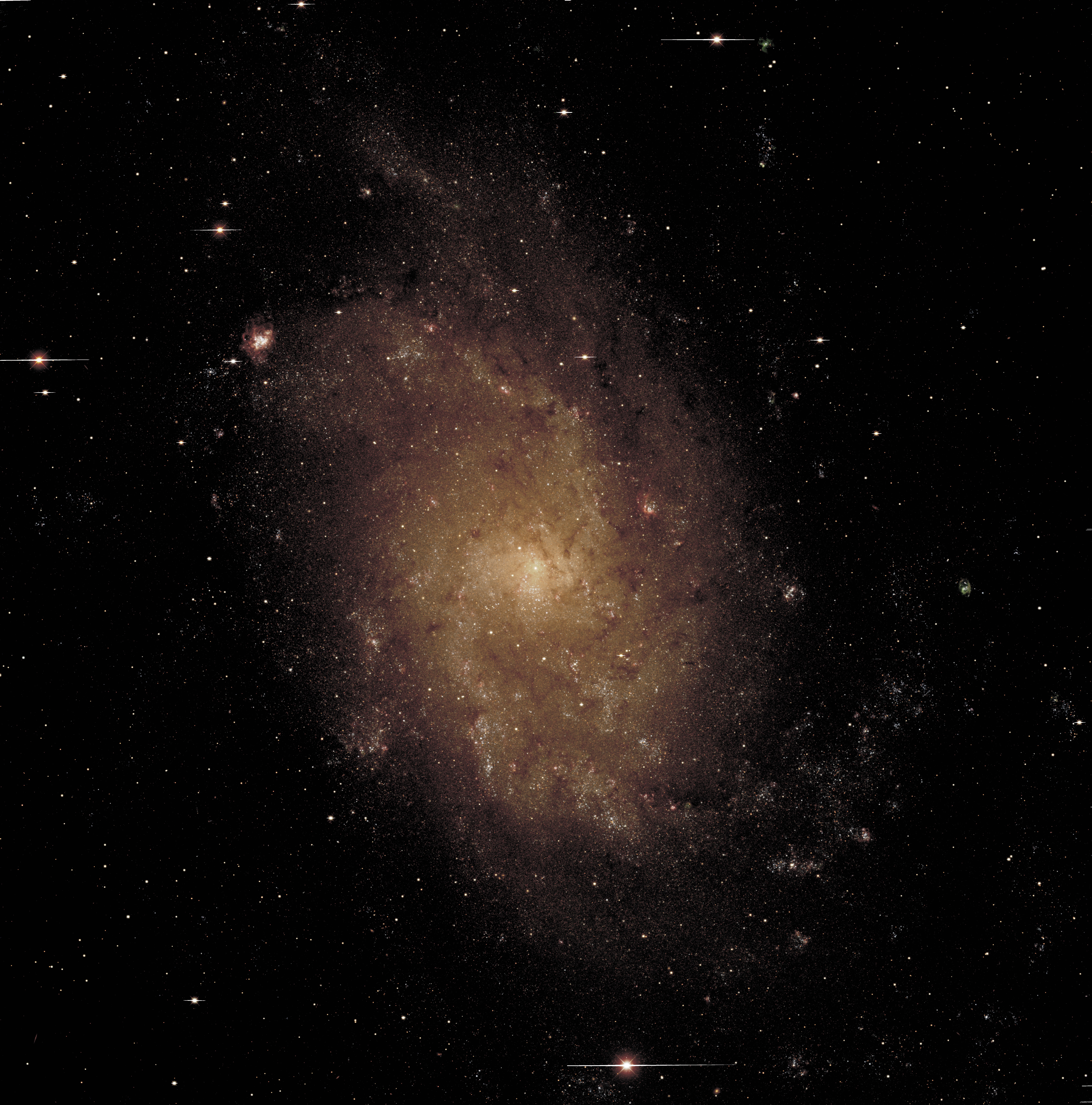At Carleton College, research is being done on how stars and gas interact to affect the evolutionary history of local galaxies. Their group has been working on M31 and M33, spiral galactic neighbors to the Milky Way, plus seven of our dwaf galaxy neighbors, and they have compiled a complete sample of ionized hydrogen or HII regions in these galaxies. Each galaxy has a set of B, V and R (blue, green and red) broadband images as well as three images taken through narrow interference filters centered on specific emission lines of ionized hydrogen, sulfur and oxygen. They use these broadband and emission-line images to study the ionized gas in local galaxies to identify new star-forming regions, middle-aged stars in their planetary nebula phase and recently deceased stars in the form of supernova remnants. Each galaxy-wide census helps them understand how these Local Group Galaxies have evolved over time.

The central region of galaxy M33 using continuum-subtracted emission-line images with the Halpha emission line mapped to Red, Sulfur mapped to Green and Oxygen to Blue.
